Coffee Table: Project Info
Posted 27 February 2013
This is the introductory page for a paid video series. Want to watch more of this project? Select the best option below to get started.
This is our table-making series. It paves the way for multiple table forms and styles that furniture makers make in the everyday of life. Paul Sellers designed this as a new design specifically for training it incorporates concepts of using Arts and Crafts that are great for teaching woodworking. This Oak Coffee Table has a couple of the Arts and Crafts features which can be used in many furniture pieces including; unique arching and through tenons.
Coffee Table cutting list
| Part | Qty | Name | Size |
| 1 | 2 | Short apron | 7/8” x 4 7/8” x 18 1/2” |
| 2 | 2 | Long apron | 7/8” x 4 7/8” x 36” |
| 3 | 4 | Leg | 2 1/4” x 2 1/4” x 19” |
| 4 | 1 | Tabletop | 7/8” x 22 1/2” x 40” |
Undershelf
| Part | Qty | Name | Size |
| 5 | 2 | Short cross rail | 7/8” x 2 3/8” x 21 1/4” |
| 6 | 2 | Long shelf rail | 7/8” x 2 3/8” x 37 3/8” |
| 7 | 2 | Long inset rail | 7/8” x 2 3/8” x 22 1/4” |
| 8 | 2 | Short inset rail | 7/8” x 2 3/8” x 13” |
Turn buttons
| Part | Qty | Name | Size |
| 9 | 10-12 | Turn Button | 7/8” x 1 1/4” x 3” |
All parts from white oak or to preference.
Tools/materials/equipment needed
The tools we use to make this project are quite common, minimal and yet essentially fundamental to all joinery types. Most of the tools below are simply part of the set you will need for all dovetailing in the future. The essential element to all joinery is a keen knife edge, an accurate square and sharp chisels.
| Tools/equipment/supplies | Knife Square Combination gauge (or marking gauge and mortise gauge) Chisel hammer Chisels (at least 1/4″, 3/8″, 1/2″, 3/4″ and 1″) Router (hand router that is, you can see how to make a ‘Poor Man’s Router here) Tape/Ruler (or both) Smoothing plane Jack Plane (optional but recommended if preparing your wood from rough sawn) Winding Sticks Handsaw Tenon saw Workbench Sandpaper (1 x sheet of 120-150 grit & 2 x sheets of 220-250 grit) 1-1½” Natural Bristle Brush Mortise Jig (we show you how to make it in the first video) |
| Wood | All the wood is 7/8″ flat stock except the four legs 2 1/4″ x 2 1/4″ x 19 we will be using white oak but other woods will work just fine. |
| Finish | Shellac on legs, shellac then varnish on top |

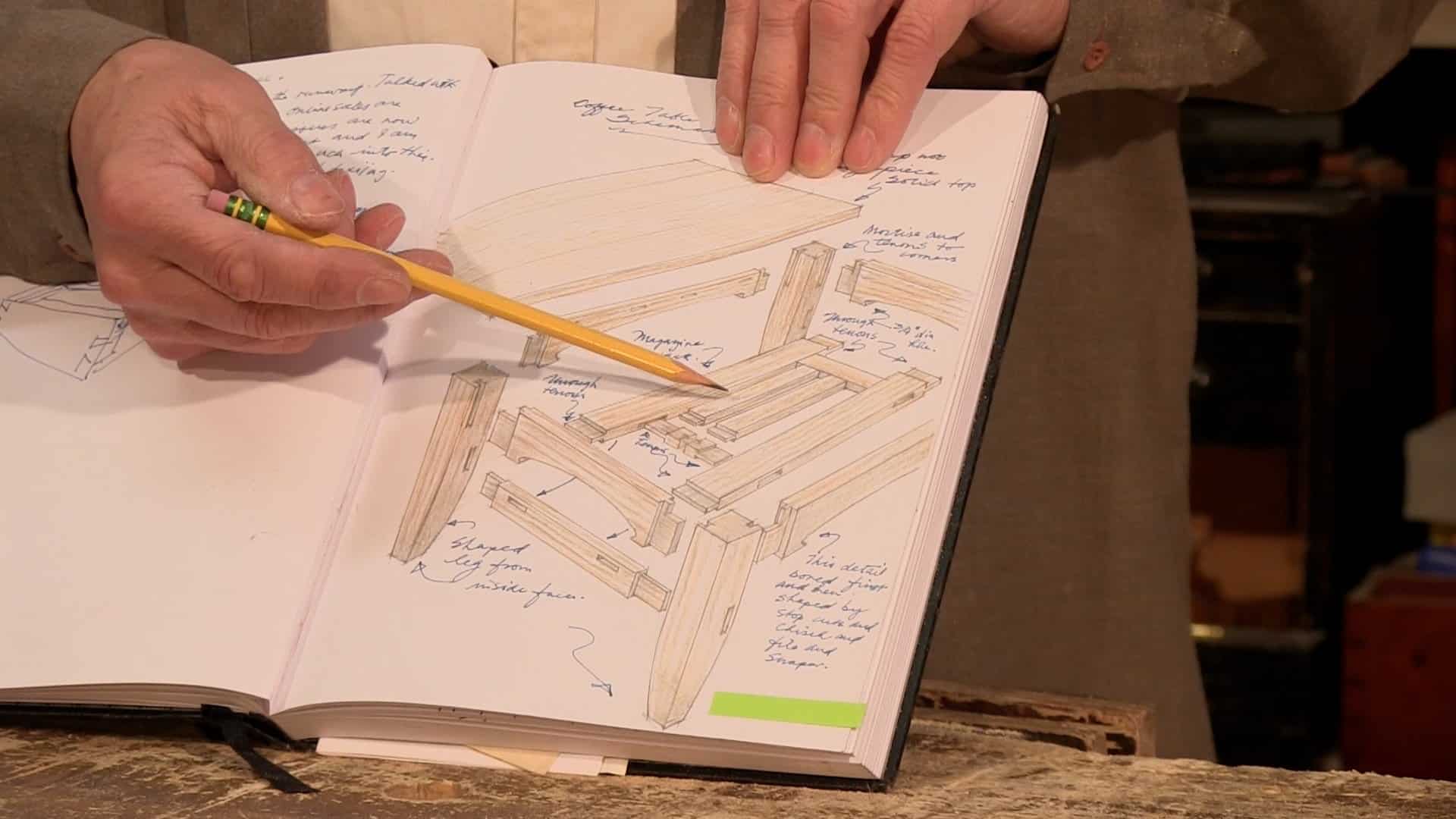
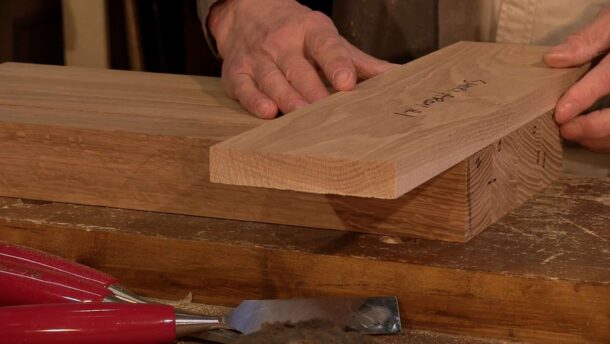
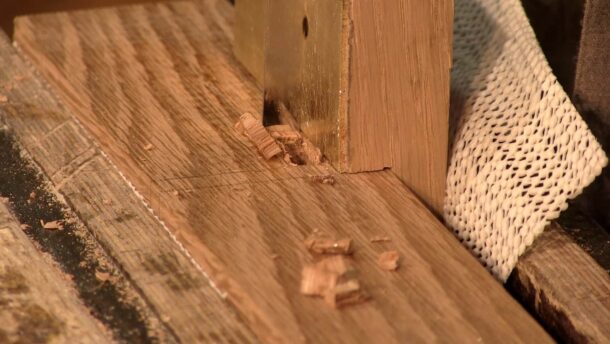
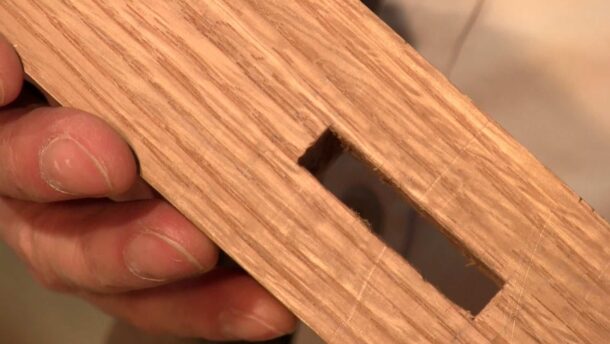
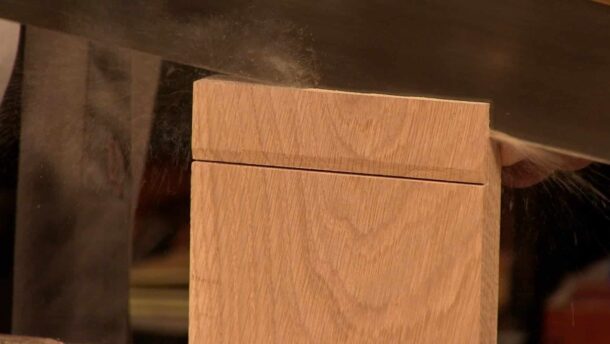
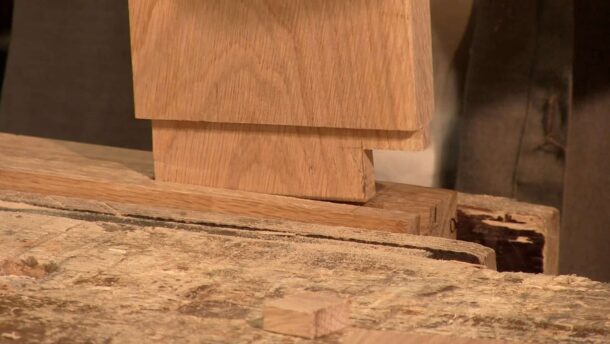
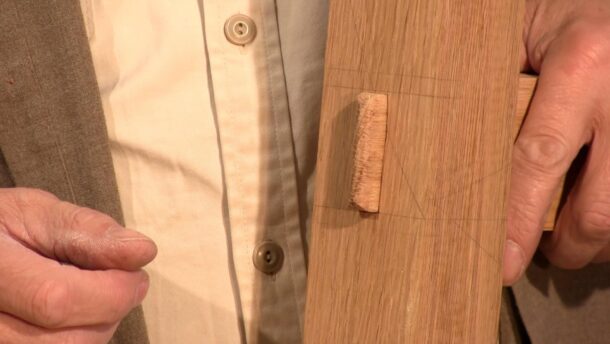
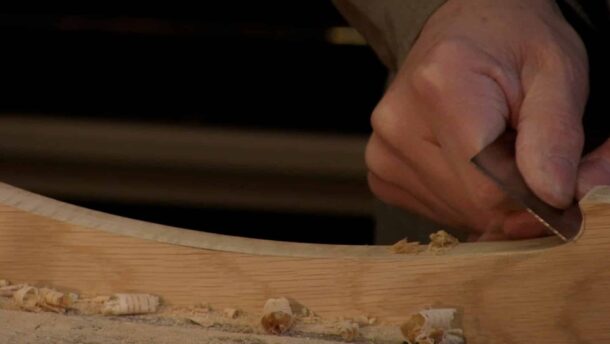
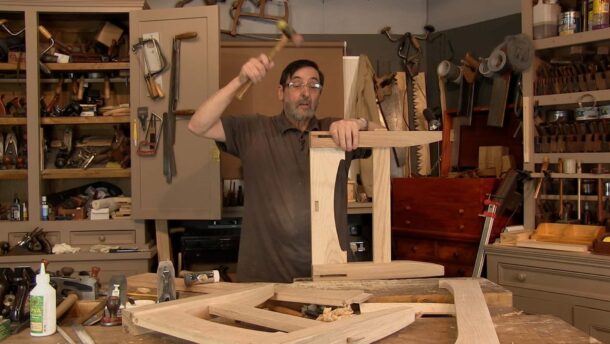
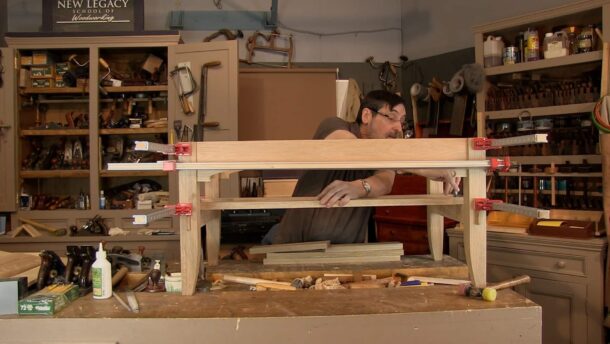
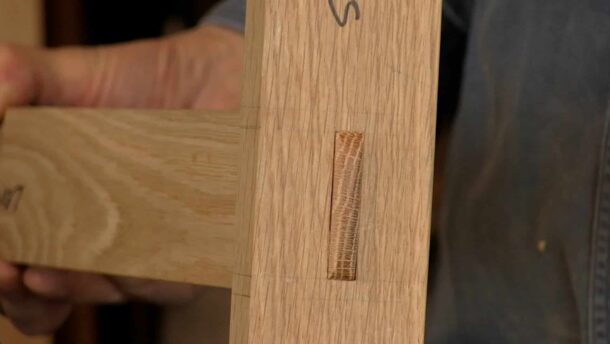
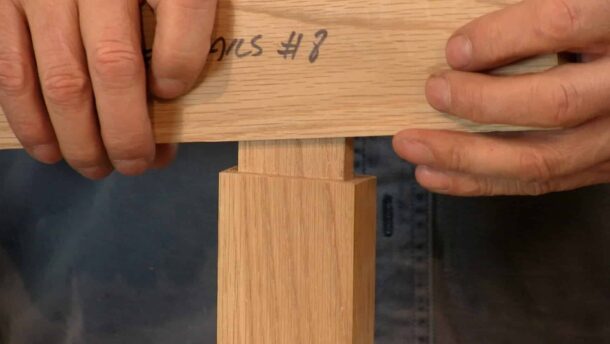
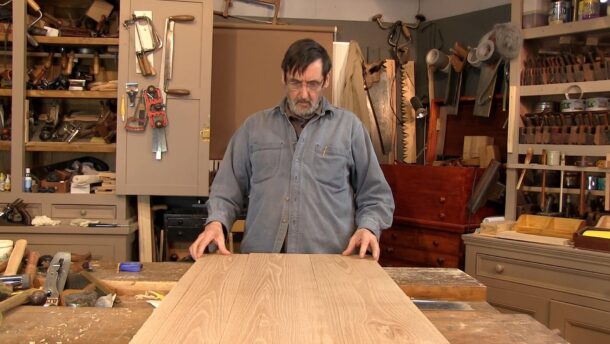
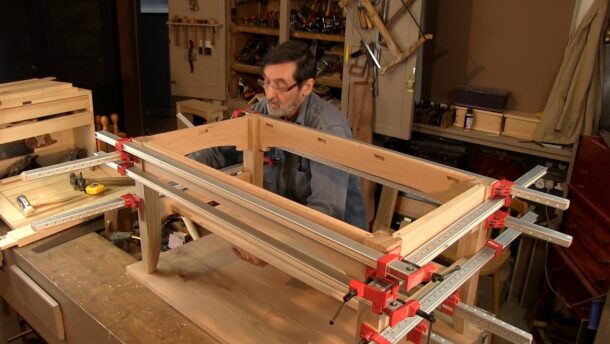
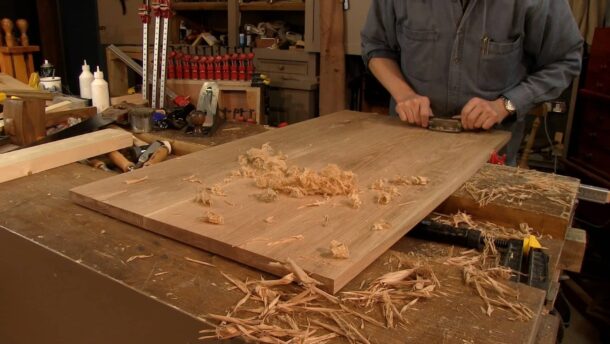
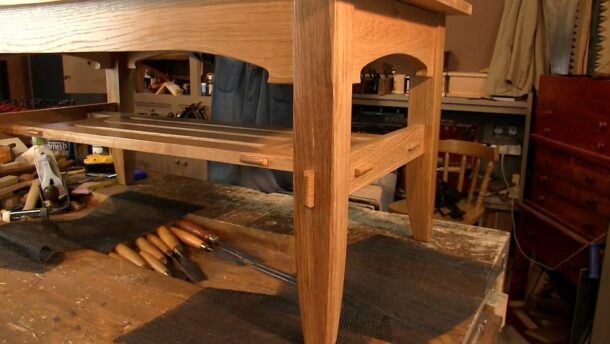
Thanks Joseph 🙂
This is going to be great! NIce work you are doing here Joseph.
Thanks guys!
Joseph, please don’t forget us, pour continental metric users 😉
thank you very much for your efforts!
Sergio
Hi Joseph, I also think as Sergio, don´t fotget us.
Thanks. Great job!
We will have to take a serious look at this as mere conversions don’t really work if 7/8″ translates into 22.2250mm. I think it would be best for me to round up to the nearest half millimeter or so.
Hi guys, just my opinion, but if all my stock is the same thickness I’m not bothered if It’s 22 – 23mm. Will it really make that much difference.
Ken 😉
Yes, I think it would be useful to provide a metric list. Having just moved to Sweden, I am still investigating how they sell timber here but it seems to be 25mm (aka circa 1″) is pretty standard, which is what I would get, and I’d use 22 or 23 mm because working to 22.5 mm is not going to be very easy in terms of being exact since my measurement tools are in 1mm increments.
Hi Elizabeth. I was watching this video again and they list the parts in metric as well. Since I, as an American, am getting the advantage of Imperial units, following is the list as given on the video for the rest of the world. My small contribution to mankind:
Part. Qty. Name. Size.
1. 2. Short Apron. . 470 x 124 x 22mm
2. 2. Long Apron. 914.5 x 124 x 22mm
3. 4. Leg. 483 x 57 x 57mm
4. 1. Tabletop. 1016 x 572 x 22mm (Finished Size)
Under shelf
5. 2. Short Cross Rail. 540 x 60 x 22mm
6. 2. Long Shelf Rail. 953 x 60 x 22mm
7. 2. Long Imset Rail. 565 x 60 x 22mm
8. 2. Short Inset Rail. 330 x 60 x 22mm
Turn Buttons
9. 12. Turn Button. 76 x 32 x 22mm
Good point.
As I ‘m … sort of flirting with the Bench I realised that a good way to convert is to add 0.5 mm to the converted length and to ‘blindly’ round -it DOWN , so :
1 inch…25.4mm…+.5= 25.9 , transformed into 25 mm gives an error of 0.4 mm ( 1.58%)
7/8 in (22.225 mm) leads to an error of 1.01% if the same rule is applied.
You might consider also http://www.convert-me.com
But it is up to mr.Sellers to decide where to mark the knife -wall…
Jeff:
Now , I’m lost : from the BOOK , [pp81] : I quote :
LEG :
4 @ 2.3/4 x 3.1/2 x 34.1/4 – should result in :
4 @ 70 x 89 x 870 – where am -I wrong , guys ?
OOOPSIE. Please accept my apologies.I was wrong … on the … project…. (:-?)
Hi, this is my first posting but is it important to work to a millimeter in a bench top? I am intending to make this bench too but the way I will make it fit my space is to get a long piece of wood, hold it in my hand horizontally and mark with a pencil the length and width I require and i will work back from that. Not sure why it is important to you but I am on your side. I am from England and since 1970 we have been metric here. The problem is I am older than Paul Sellers and I can only think in Imperial sizes even though I had to measure in metric as a metal working machinist because since 1970 drawings have called for metric sizes. Even worse the machines I worked are even now still calibrated in Inches So please you Americans and Europeans have thought for us. The older of us are in no-mans land 🙂 Please do not take seriously just thought it a tease but I will make my bench fit the space i want the way I said.
Thanks for posting that Jeff! I missed the metric dimensions off the list. Sorry
Not a problem Joseph. I can’t believe every one of us missed that, including myself.
I know this is int the arts and crafts and Paul is using oak which is the most likely choice. But I have cherry on hand and was wondering hoe this design wold look in cherry. Any thoughts? I need a coffe table and this will end up in my living room so if cherry is just wrong then I will get oak. This will be the first piece of real wood furniture in the room so it does not really matter as far as matching the room goes. The couch and recliner are dark brown leather and the tv is sitting on a temporary thing till I build a proper tv stand (which will be the same wood as I choose for this and I do have enough cherry for both). Thanks, John…
You have to remember that this site is aimed for the US.
As The United States is the only industrialised country that does not use the metric system as its official system of measurement. So if you work in metric I would just take it to the nearest mm and not worry about it being exact.
John, I think the table would look nice made out of cherry.
@ejvc – I know we Americans are the last hold outs on the imperial system (sorry), but it certainly won’t hurt anything to round the figures or even completely change the size to suit you. I would lay out some masking tape on the floor where you want it, and see if the size fits your tastes. If not, change it. There’s nothing magical about Paul’s dimensions, just keep the mortise and tenon proportions about the same. I would also not vary the overall proportions too much, as you might lose the visual appeal. There are certain proportions that are more pleasing to the eye than others.
@griz – I agree, I think that cherry would look great as well. I think the cherry dyed a darker brown/red would give it a more refined feel than the typical Arts & Crafts semi-rustic look. But it’s your table, and tastes vary greatly.
John Cherry would work fine, in fact it is one of my favorite hardwoods. I am starting to get a new liking for pine ( I used to hate it, but it is all that is available where I live ) since Pual has made a few projects with it.
Steve
John,
Cherry is a great choice for arts and crafts furniture. Stickley actually has several catalogs devoted to cherry. I am planning on using cherry myself as I can’t reliably find 12/4 white oak.
Thanks for all of the replies to my Cherry question. I will be using the cherry I have on hand for this project. I do have to find some thicker stock for the legs though. Is anyone laminating the legs or is that ust not the way to go??? Thanks, john
Hi @griz,
Just be careful where the joints between the laminations are. Remember, you are going to be cutting mortises going in both directions. It is certainly possible to laminate them but if it is possible to get solid wood then I would suggest it.
Joseph -My wife and I were looking at where we might use the the coffee table in our home and were wondering if there was a photo somewhere of the completed table. Thank you.
Hi @osseo,
I wish we did! This is the first one of this design and we have not finished filming. We don’t have a finished table yet. Paul will undoubtably post one on his blog as soon as we have one.
Thanks – I will look forward to seeing it.
hello I wonder if Paul Sellers will get more DVD, I have the 1.2 part and I hear you’re preparing more dvd … Is that true??
@cabanon I would post this on the forum buddy. You will get a better response, as this is the project info page.
Cheers 🙂
Is there a schematic, or even a copy of Paul’s journal drawings, anywhere. I know going through the construction will tell me how far in from an edge the legs are, or how far up the rack is from the bottom (or down from the top!), but I like drawings, and such like, to mark-up and refer to.
Thanks.
Randy
No drawings as such. Not time. I did do a blog series on my blog though and you might prefer to follow that. Here is the link: https://paulsellers.com/series/building-a-workbench/
i think something got lost in translation here i thought Randy wanted drawings of the coffee table build
Indeed. He does have a few pictures of the coffee table on this blog post:
https://paulsellers.com/2013/02/coffee-table-filming-almost-done/
But I will ask Paul about other more detailed drawings. There might be a slight delay as we have just started a 9 day course at the castle, but we’re on it (-:
I recently became interested in building a coffee table at the request of my daughter. I followed your link but could not find a picture just a sketch. I think I need to see a photo or two before I could justify paying for the series. I hope some are available.
I have a few questions I’d like to get some opinions on:
1) Is this a project a woodworking novice should consider or should I wait with it until I get some more experience?
2) Can I expect to use cherry without problems?
3) I can get boards of 19mm (3/4″) or 26mm (1″) or 40mm (1″5/8). I don’t want to plane it all down to 7/8″ (22mm). 3/4″ seems a bit thin to me; do I have to expect problems with the 1″ boards?
4) Can I laminate 2-3 1″ boards to make the legs from? It would be convenient to be able to use the same kind of boards for everything.
Thank you for your time.
– David
1) I think that it depends on whether you personally have any skill. Even if you have been woodworking for a year or two i would consider you a novice if you were a machine only woodworker because machines do the work for you and reduce skill by 95%. If on the other hand you have been working through the projects on woodworkingmasterclasses from the beginning and practicing on duplication along the way, tis project is definitely doable.
2) Yes, cherry is an easy and pleasant wood to work with.
3) Use the 1″ for the tabletop and the 3/4″ for all the apron rails and the underside shelf work. Cherry is a stable wood and should give you no problems at all.
4) You can laminate legs but it looks terrible on furniture of this type. Like you didn’t care. Buy in some stock to the right size. it’s a small price.
Hello. What an amazing website. Thank you so much for putting this all together. Is there a plan or diagram of the table already available? Or should I just watch the videos and get the measurements as they are presented during the build? (i.e.: the mortise is __ mm deep and is cut __ mm from the inside face) Just asking, in case this is already available somewhere on the website and I had not seen it yet.
All, I would like to add my two cents to the discussion about metric versus imperial sizing. I am an American and while this site may have started with America as its primary audience, it’s become clear that Paul’s following is international and as such I appreciate when he gives both metric and imperial sizes. With any luck some of us Americans who are stuck using the less efficient Imperial sizes may actually learn to think and the more intuitive and logical metric measurements. I’ve always wished I would’ve started building my tool collection with metric tools and through the benefit of Paul’s teachings I’m actually starting to think in metrics. It’s true that when converting from one to the other the numbers do not often match up exactly, but as woodworkers who often work from someone else’s designs we must modify the measurements to suit our particular needs. For instance, if my living room was too big or small big for the scale of the table that Paul built, I would have to change all the measurements to suit my particular space. I would submit that anybody converting from metric to Imperial or vice versa should do the same. Although it is a little more work, there is actually a good bit of learning that comes from doing these conversions yourself. You not only gain a better understanding of an alternate measurement system, but more importantly, you gain a more thorough understanding of the build when you sketch it and work out the dimensions for yourself. I say all this because it sounds like some of us are getting hung up on precisely converting from one dimension to another. Especially with large-scale projects, and millimeter here or there rarely makes a difference in the overall aesthetic of a piece. Practically though, consistency is important. Regardless whether we are building in the same measurement system that Paul cites, I think we should all be thinking about whether or not those particular dimensions work for us both aesthetically and functionally. I know this may not be the most popular position, but I share my thoughts in the spirit of friendship and cooperation with the hope that my position makes sense to someone other than myself. As always I wish you all luck and joy.
wonderful project Paul! I haven’t heard you mention it on some of these larger projects, but are you buying pre dimensioned wood, cutting it down from stock on a bandsaw, cutting it down from stock by hand?? just wondering how you are approaching that…
Hi everyone first i like to introduce myself i am new to the site and i want to make this table but i dont find the drawing plans for it i dont have internet connection on my shop so i really need them to follow the blue print as i made the joinery does anybody have them? thanks in advance and greetings from Mexico =) by the Way i just finish all the projects on your book Paul thank you very much for all the effort you are making to all the new gen real wood workers around the world. Let the MDF die =)
Erik,
Welcome.
I believe the Coffee table Project predates the drawings by Greg Merritt.
Maybe we should all chip in and get Greg to draw up the earlier projects. 🙂
Best,
Craig
Are there technical drawings for this project?
Hi , I am planning on starting the Coffee Table project and so far have watched the videos and plan on buying wood this weekend ( Probably Cherry !) . I noted several comments in the forum from years past asking about technical drawings for the coffee table . Does anyone know if drawings are available now ? Any other suggestions on building this table from others who have completed the table ? Possibly a completed picture ?
thanks for your help
Peter Marshall